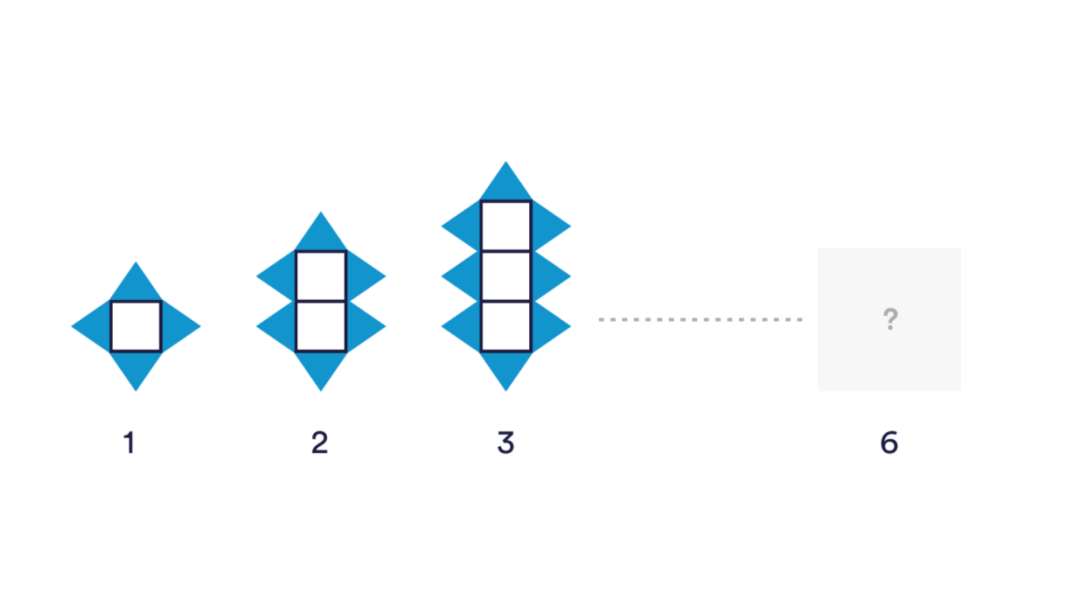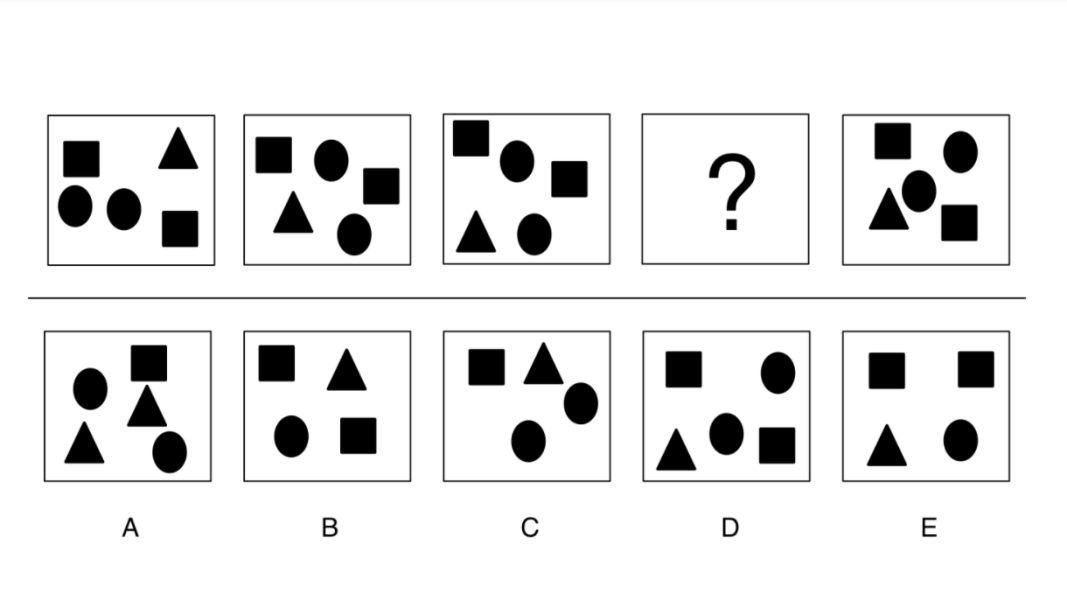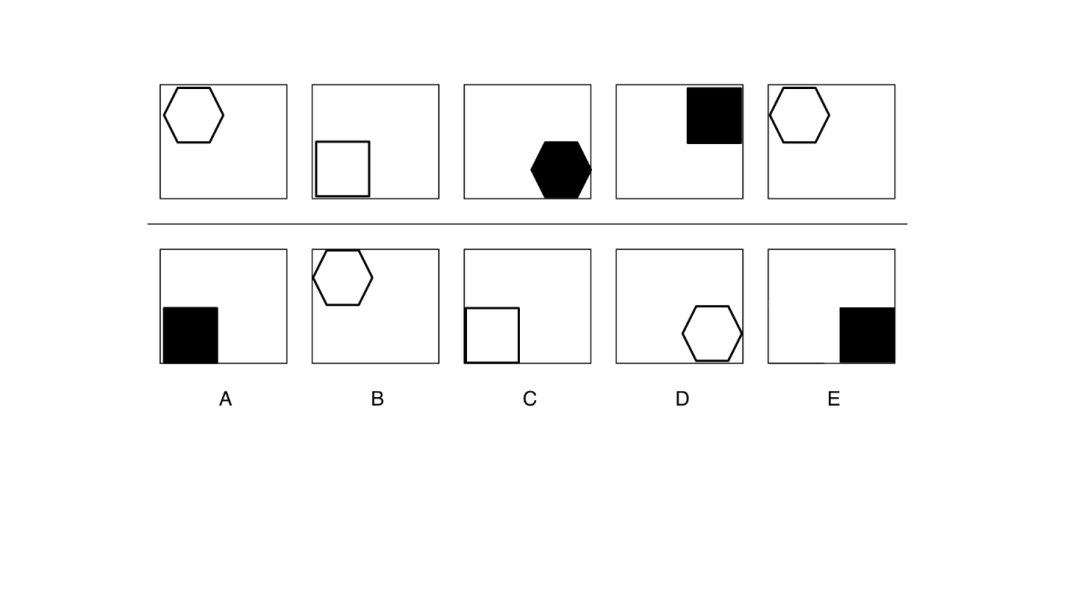What is a logical reasoning test?
A logical reasoning test is an assessment that measures your ability to interpret information, apply logic to solve problems and draw relevant conclusions. It is typically non-verbal and in a multiple-choice format, and requires the use of rules and deduction to reach answers, rather than prior knowledge.
That said, logical reasoning is actually an umbrella term for multiple types of assessment, and you may find you’re asked to take any one of the following five test types as part of a job application.
Deductive reasoning
Commonly presented as a series of word problems, deductive reasoning tests require you to apply top-down-logic; that is, you must draw the right conclusion from a set of given premises.
Typically, you’ll be presented with a short paragraph, or stimulus, detailing an argument, scenario or a number of stated facts, and a set of possible answers. Only one of these answers can be true, based on the evidence provided.
You may also be given a conclusive statement and asked to decide if it is true or false, or if there’s insufficient information to conclude either way.
Inductive reasoning
Unlike deductive reasoning, inductive reasoning tests ask you to make general inferences – probable conclusions based on a set of information, rather than unquestionable outcomes.
This is most often done through the use of shapes, patterns, sequences and diagrams.
You’ll need to quickly identify relationships and rules, then apply these to find the most logical answer from the multiple-choice options. This could be identifying the odd one out, filling in the missing part of a pattern, or finding the next part of a sequence.
Diagrammatic reasoning
Similar to inductive reasoning, diagrammatic reasoning tests offer visual representations of a problem and require you to make logical connections to draw a conclusion.
Questions often take the form of a diagram with inputs and outputs, and you’ll be required to select which processes from a list of operators would achieve the documented effect.
You may also be presented with sets of abstract sequences, given a standalone visual, and asked to select which set it belongs to.
Abstract reasoning
Abstract reasoning tests are essentially inductive and/or diagrammatic reasoning tests under another name.
They too require you to find relationships and rules between visual sequences, then apply these to select the correct image from multiple options, be it a missing part or a continuation of the sequence in question.
Critical reasoning
Critical reasoning tests are more akin to deductive reasoning tests, in that you’ll be dealing with word-based scenarios, arguments, evidence and conclusions.
These tests tend to evaluate a range of skills. Argument analysis is common, in which a question is posed, and a yes/no answer given with a supporting statement. You’ll need to decide whether the statement is a strong or weak argument.
Other question types involve scenarios and statements from which you’ll be asked to make assumptions, deductions and inferences based on the evidence provided.
Critical reasoning tests are most commonly used in sectors where evidence-based judgement is an everyday requirement, such as law.
Why do employers use logical reasoning tests?
As with any form of psychometric assessment, employers use logical reasoning tests as a way to filter applicants, most commonly in the pre-interview stages of selection.
Logic forms a fundamental part of day-to-day decision making. Our reasoning capabilities determine how effectively we interpret the world around us, and how we use what we know to be fact to inform our choices. As such, logical reasoning is a vital part of many job functions.
In administering a logical reasoning test, employers are evaluating how well you’re likely to perform tasks like strategy development, risk assessment and forecasting, as well as general problem solving.
Additionally, the ability to quickly discern patterns, understand complex relationships, and make logical deductions underpins successful innovation and creative problem-solving in dynamic work environments. Thus, logical reasoning tests also serve as a method for assessing a candidate’s potential to contribute to innovative solutions and strategic thinking in their prospective role.
Common logical reasoning test publishers
Below are listed five of the most widely used publishers of logical reasoning tests, each of which has its own approach to this type of assessment.
SHL
SHL publishes and administers both inductive and deductive reasoning tests, the lengths of which vary depending on the level of role applied for. Typically though, they last no longer than 25 minutes and follow a standard format.
Kenexa
Kenexa’s logical reasoning test focuses on inductive or abstract reasoning, with candidates required to assess and manipulate shapes and sequences. It also has a deductive reasoning test, which it refers to as verbal reasoning.
Cut-e
Cut-e offers both inductive and deductive reasoning tests, with individual variations of each. The layout of Cut-e’s tests is known to be somewhat different to other publishers, so if you’re taking one be sure to practice specifically for this format.
Saville
As one of the best-known publishers of psychometric and aptitude assessments, Saville’s logical reasoning tests are widely used. They’re offered as either abstract or diagrammatic reasoning and have a time limit of around 20 to 25 minutes.
Talent Q
Logical reasoning tests from Talent Q are adaptive, which means the difficulty rating of a question is related to your performance on the question prior. Do well initially, and they’ll get harder. Struggle, and they’ll become a little easier.
How to prepare for logical reasoning tests
The best way to prepare for a logical reasoning test of any description is to train your brain to think more critically – and that means practice.
Try making puzzles a part of your daily routine or use brain-training apps in your downtime. If you’re preparing for a deductive or critical thinking test, take an analytical approach to reading the daily news. Instead of simply taking things on face value, ask yourself questions based on the evidence provided, and whether or not it’s enough to draw solid conclusions.
And make sure you take plenty of practice tests. This will help you understand how to answer logical reasoning tests, and will make you familiar with many of the common relationships found in abstract sequences, including orientation, shading, rotations and reflections.
If you’re struggling to identify relevant rules, work backwards from the answer. The better you understand where and how certain rules apply, the more picking them out will become second nature.
As you progress with your practice tests, start taking them under exam conditions, including setting yourself a time limit. Pacing is a key skill in logical reasoning tests, as your score will not only indicate how many correct answers you gave, but how long it took you to answer each question. By broadening your practice beyond traditional puzzles and tests, you foster a more adaptable and comprehensive critical thinking skill set, better reflecting the dynamic problem-solving required in many professional environments.
Lastly, be sure to practice the right type of test. Ask your prospective employer which of the five types of logical reasoning assessment you’ll be sitting, and if possible, which test provider they use. This will allow you to target your preparation to the specific test format you’ll face on assessment day.















